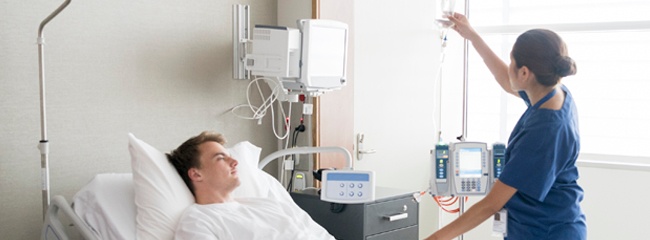Written by Laurie Blount, Director of Medical Device Integration, Iatric Systems

Earlier this month, the ECRI Institute published its annual Top 10 Health Technology Hazards report. Infusion Errors topped the list this year as hazard #1. Here’s our interpretation…
First, you can access the ECRI Institute report here. It’s important to note that this report focuses on medical devices — from infusion pumps to complex imaging devices. So don’t expect to see any patient safety issues unrelated to medical devices included in the report.
{{cta('bcb5940b-9281-4981-baa0-aca3676416ab')}}
Noteworthy Details
Infusion Errors ranked #1 even though they weren’t on last year’s list. Many of the topics from last year’s report reappeared this year. For example, last year’s #1 hazard — Inadequate Cleaning of Flexible Endoscopes — is the #2 hazard on this year’s list.
Since Infusion Errors didn’t appear on last year’s report, I found it interesting that the topic showed up at the very top of ECRI’s list this year. On the other hand, that correlates very closely with the sharp increase in interest that we’ve seen recently in connection with Smart Pump Programming.
If you’re unfamiliar with that term, here’s a simple definition — Smart Pump Programming is the electronic transmission of an IV infusion order from an EHR’s pharmacy system directly to the patient’s smart pump. See the image below for a visual illustration.

Smart Pump Programming effectively minimizes the need for manual pump programming, and enables a nurse to focus instead on verifying the five rights once the electronic order automatically appears on the pump. Case studies show that Smart Pump Programming can reduce the number of pump programming steps by 58.8% (from 17 steps to 7) and reduce medication administration errors — heparin errors, for example — by 32%.1
Barriers to Smart Pump Programming
Conceptually, Smart Pump Programming sounds simple, right? And with the tremendous potential for patient safety benefits, you might ask why every hospital isn’t already doing it. Well, there are a few obstacles to overcome if you’d like to put Smart Pump Programming in place at your organization.
Outdated pumps. Infusion pumps are a major investment. Many pumps that are in place at hospitals today aren’t equipped for Smart Pump Programming (which, at minimum, requires the ability to receive HL7 data into the pump). Check with your pump vendor to find out if the pumps you have can accommodate receiving HL7 data.
IHE-PCD standards take HL7 specs to a higher level, and IHE-PCD standards have become the standard of choice for medical device manufacturers, including smart pump vendors. You can learn more about IHE-PCD standards (or invite your IT department to learn more about them) by watching this one-hour YouTube educational webinar on the subject: https://www.youtube.com/watch?v=WVlZFNUI93k.
And Smart Pump Programming requires a significant allocation of FTEs… There’s testing to be done — a lot of testing! It’s a six-to-nine month project, and you’ll spend a very large chunk of that time testing every IV medication scenario there is.
So, if you’d like Smart Pump Programming to be live in your hospital within, say, the next five years, we recommend you start planning now. If you’d like to learn where to begin, please contact me at Laurie.Blount@iatric.com. I look forward to hearing from you.
1. Prusch, A.E. et al, Integrating technology to improve medication administration, American Journal of Health-System Pharmacy, May, 2011, Vol. 68, Issue 9, p835-842.